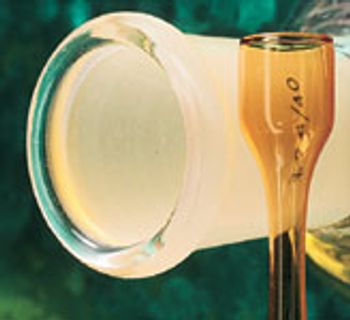
The former "Milestones in Chromatography" editor returns to give readers the story of his time in the field.
Leslie S. Ettre, editor of "Milestones in Chromatography," has been part of the chromatography industry for over 50 years, and is one of the most respected figures in the field. He was with perkinElmer Corp., Shelton, Connecticut, for over 30 years, and is currently a member of LCGC's editorial advisory board.

The former "Milestones in Chromatography" editor returns to give readers the story of his time in the field.

After nearly 10 years of writing "Milestones in Chromatography," resident historian Leslie Ettre will step down from his position as an LCGC columnist.

Work done 60 years ago at the University of Innsbruck (Austria), representing the start of gas chromatography, is outlined in this month's column.

In addition to the universal detectors used in gas chromatography (GC), selective detectors have also played an important role in the rapid spreading of the utilization of the technique. Probably the most important selective GC detector is the electron-capture detector, with a very high sensitivity to organic compounds containing chlorine and fluorine atoms in their molecules. The electron-capture detector had a vital role in environmental protection and control - its use helped to prove the ubiquitous presence of chlorinated pesticides in nature and halocarbons in our atmosphere, and made us aware of the global extent of pollution. It was the electron-capture detector that made concentration ranges of parts-per-billion (ppb: 1:109) or even parts-per-trillion (ppt: 1:1012) detectable. Today, these terms are used routinely without realising how formidable such a sensitivity really is: 1 ppb means that a spaceship (or a UFO, depending upon one's inclination) could pick up a particular family of six from..

After a 25-year dormant period, chromatography was finally reborn in the first years of the 1930s.

Guest columnist Volker Schurig discusses the achievements of Emanuel Gil-Av in introducing enantioselectivity into chromatographic analysis.

Leslie Ettre is joined by Peter J.T. Morris as the duo discusses the work of James E. Lovelock, which eventually led to the invention of the electron-capture detector.

This month, Leslie Ettre briefly investigates whether the principles of chromatography - either consciously or unconsciously - were used in some ancient work.

This month's "Milestones in Chromatography" column commemorates the centenary of the two publications of M.S. Tswett first using the term "chromatography."

This installment of "Milestones in Chromatography" discusses the events leading to the development of the amino acid analyzer near the end of the 1950s at the Rockefeller Institute of Medical Research by Moore, Stein, and Spackman.

This postscript to the December 2005 installment "Early Petroleum Chromatographers" outlines the East–West controversy concerning the invention of chromatography.

This column deals with a few chemists active during the early growth of the petroleum industry who carried out chromatography-like investigations even before Tswett...

Leslie Ettre looks at the life of industry giants Jim Water and his contributions to the development of HPLC.

The instrument is "a splendid example of automatic analysis."

Columnist Leslie Ettre looks back at the life and contributions of Csaba Horvath, one of the giants in the field of chromatography.

This month's installment of "Milestones in Chromatography" pays tribute to a true milestone in the evolution of chromatography: the introduction of the first successful GC instruments.


This article is an adaptation of one written in the German publication Nachrichten aus der Chemie and discusses how gas chromatography instrumentation, columns and techniques have improved over the past 10–15 years, making even relatively new equipment obsolete for many applications. In particular, the authors look at how older equipment is unsuitable for fast GC, better trace analysis and comprehensive multidimensional GC.

In another of Ettre's historical examinations of the early days of gas chromatography, he discusses four major application fields in which the technique changed the way chemists perform analyses. These include hydrocarbon analysis, fatty acid analysis, flavour compounds and essential oils analysis, and environmental analysis. In addition, he also explains how GC helped in the evolution of liquid chromatography and in the development of the scientific industry.

Developments in gas chromatography instrumentation, columns, and performance during the past 10 years.

Leslie Ettre discusses four major application fields in which GC changed the way chemists carry out analyses.

This column discusses the beginnings of GC in the United States and four early symposia.

Leslie Ettre discusses the life and activities of the inventor of chromatography.

"Milestones in Chromatography" discusses the beginnings of gas chromatography in the UK and the first two international symposia that played an important role in the dissemination of the technique.

Leslie Ettre discusses peak asymmetry calculation.

Leslie Ettre looks at the birth and early development of headspace analysis.

Leslie Ettre remembers A.J.P. Martin, inventor of partition, paper, reversed-phase, and gas–liquid partition chromatography.

Leslie Ettre describes the development and applications of this long-forgotten unit.

The second of a two-part series dealing with the lives and activities of important chromatographers who were active during the early growth and expansion of GC.

The first of a two-part series that discusses key pioneers of gas chromatography.

Published: April 1st 2000 | Updated:

Published: July 1st 2000 | Updated:

Published: December 1st 1999 | Updated:

Published: November 1st 2000 | Updated:

Published: July 1st 2001 | Updated:

Published: February 1st 2002 | Updated: